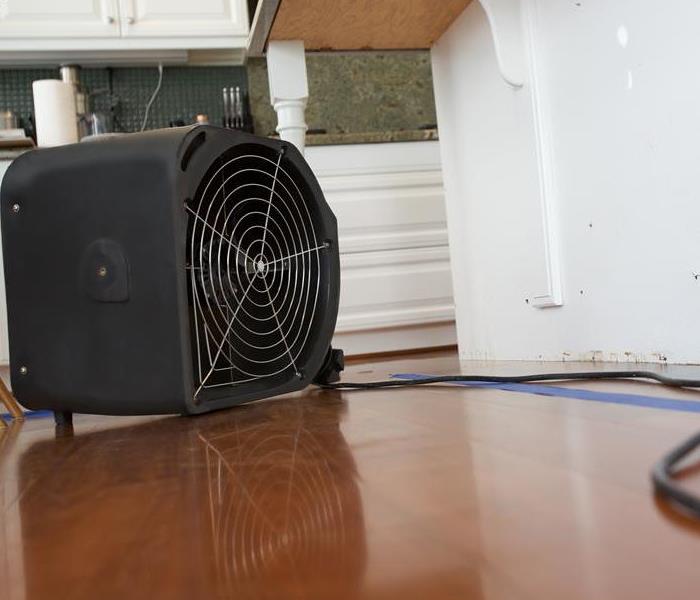What is the Water Damage Restoration Process?
2/17/2023 (Permalink)
Water damage restoration is a complicated process that requires expertise, experience and teamwork. The water damage restoration process is organized into three stages, water removal, drying, cleaning and disinfecting. Each stage is important to the overall success of your project. It’s not something that can be completed in a single visit, or even over the course of several days or weeks. It’s a long process that requires expertise, tools and equipment to complete correctly.
Water Removal
This is where you get rid of any wet or soaked materials that have been exposed to water. Content of the property should be removed and disposed of properly. The property can also be begin the drying process using fans and dehumidifiers where necessary. They may use dry ice to help keep the room cooled down to help prevent secondary damages.
Your water damage experts will first be dispatched to your location to pump or suction standing water from the building. Once they’ve removed as much of this moisture as possible, they will begin addressing any issues caused by high humidity levels in your home or office space—often by installing dehumidifiers and fans throughout affected areas to move air more quickly through these spaces and reduce unwanted moisture buildup on surfaces such as wood floors, drywall, cabinets and appliances (like refrigerators).
Drying
Air movers, dehumidifiers, heaters, and sometimes moisture meters are put in place to help expedite the drying process. Moisture meters are used to help measure the amount of moisture in the property and damage to put together a plan of action for water removal.
The use of equipment such as truck-mounted vacuum and industrial pumps enables SERVPRO to remove large amounts of water quickly, efficiently and safely. The truck-mounted vacuum is used for large areas where there is little access or where it’s impractical to transport heavy equipment in by hand.
Cleaning
The final step is cleaning and disinfecting surfaces to remove contaminants from the area. This step is usually done by a professional, but if you're feeling up to it, you can also do it yourself. The cleaning process is done with a combination of chemicals and vacuuming. After this final step, you will be able to move back into your home again! You may still need to take care of items that were warped or damaged by flooding water, but at least now it's safe for you and your family members to live without interruption.
When water damage is present in your home, don't wait! Give the professionals a call at SERVPRO a call for your water damage restoration emergency.




 24/7 Emergency Service
24/7 Emergency Service
